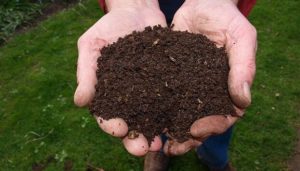GARDENER’S CORNER
Nuts Over Spring Cleanup
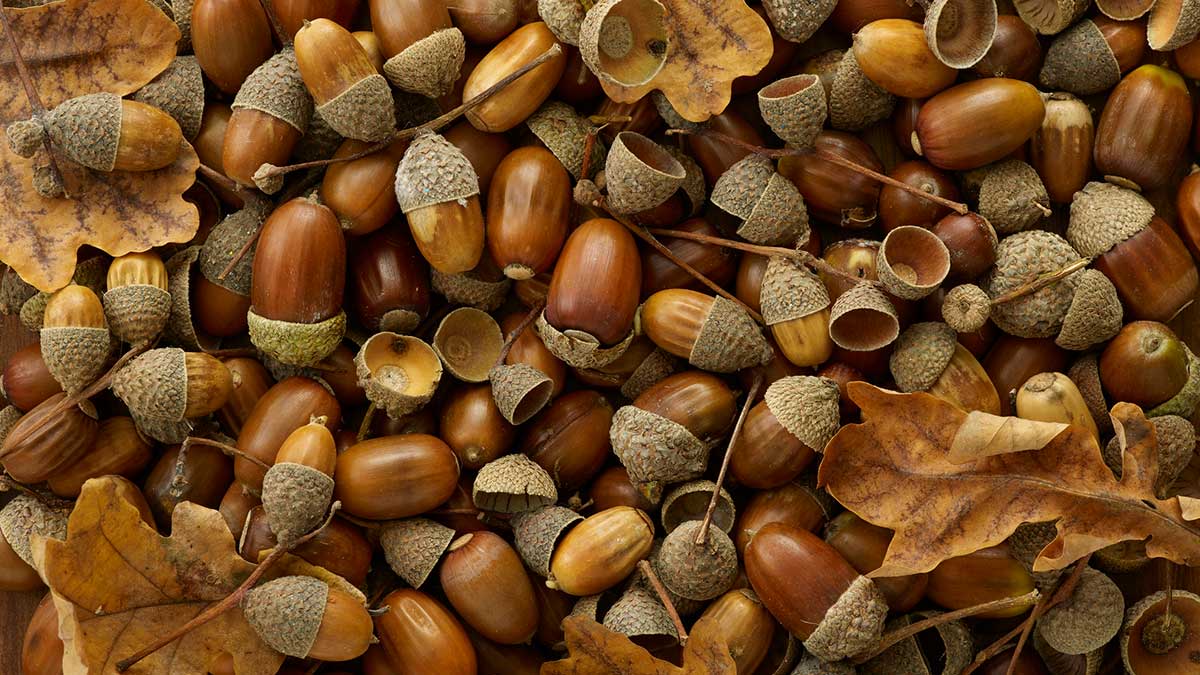
If you are like us, enjoy the sounds and smells of springtime, you are probably hard at work out there cleaning up your yard. One of my family members mentioned to me recently, that they thought that the abundance of acorns on the ground, meant it should have been a “hard winter”. In reality, here on Cape Cod, they felt as if it were a normal winter. While some weather patterns such as drought can affect plants and their production,
I wanted to quickly touch on this subject, as people think that the trees seem to know what our New England weather patterns are. Maybe we should ask the trees what this global warming is all about, or ask if we should buy a new snowblower before the snow starts flying. As bluntly as I can put it; oak trees don’t care about wildlife that will be having a tough time finding a meal during the winter or any other old tale that has been passed down from generations. They care about one thing, and that is to ensure that in the years to come, there will be more oak trees! In fact, white oaks produce their nuts every year, while black oaks and red oaks take two full years for theirs to mature. Most oak trees in their younger years don’t even produce acorns until they are about 20 years old, and really start producing a good crop of them when they are around 50 years old. On an average 100-year-old oak, that tree will produce over 2000 acorns in a season.
So, while our mighty oaks are fantastic native shade trees, remember not to get upset at cleaning up all that mess. Treat these trees like our grandparents that we need to cherish and help get along in their elder years; appreciate all that tree has to offer for what it has seen in its lifetime, and bend down and clean up those raked-up piles. Enjoy seeing those acorns hit the ground; it means that we will see more trees growing in the future.
JE
”Mulch is Mulch”
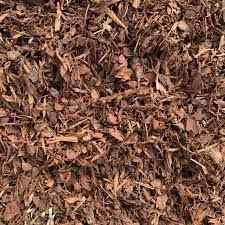
Let me be honest, all mulch is not created equal. There, I said it. Do any of the readers of this blog really appreciate the smell of fresh mulch in the springtime as much as I do? To me, spring doesn’t officially start until I can smell the first load of Pine Bark that is delivered here in our yard. Some years it seems as if it may be a bit premature, but for me, I would be happy if spring would start the day after Valentine’s Day. The smell of fresh Pine Bark is like the start of the New Year. It is the start of our work season, and the opportunity to get to be a part of something that I thoroughly enjoy; the sheer beauty of a well-organized, designed, and maintained landscape. This does not only include the well-manicured, but it also includes some of the more traditional native Cape Cod landscape and plants that we see everywhere; the Rosa rugosa by the shoreline, the sweet smell and buzz of bees on Clethra, the gorgeous bark of an American Beech tree. On the manicured properties, mulch is typically applied yearly, while some properties have a more natural feel and don’t require as much mulch spread in their gardens. Some people even go as far as using rubber as a mulch or even some of the dyed products. These are not my style but to each their own. When choosing the mulch that you want in your garden, it is important to know what you are getting. I tend to use Pine Bark as much as possible. It is a natural product that has organic matter in it, and provides a huge benefit to your plants. Some folks like to use woodchips. Unfortunately, this is a big no-no. Without boring you in too much soil science, I will cut to the chase. Wood chips in general have an abundance of carbon. With that said, plain chips will cause nitrogen tie-up in the soil depriving your plants of the nitrogen they are looking for. Although cheaper and still a natural product, there is no benefit, and that is not the way to go. Straight compost is a great way to go, especially in a heavily planted perennial garden where you won’t be seeing much of the bare ground and the plants will thrive in these conditions. Mulch your gardens in accordance with your tastes, but as always, be mindful of the benefits in which you are looking to receive whether it may be plant health, color contrasts, or even weed suppression. Every person and their garden preferences are all different, but we all have the same idea in mind; bigger blooms, brighter, more vibrant colors, and gorgeous gardens.
JE
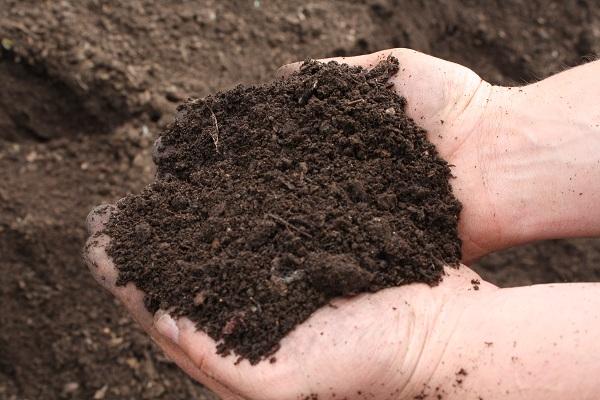
Spring Blooming Bulbs!
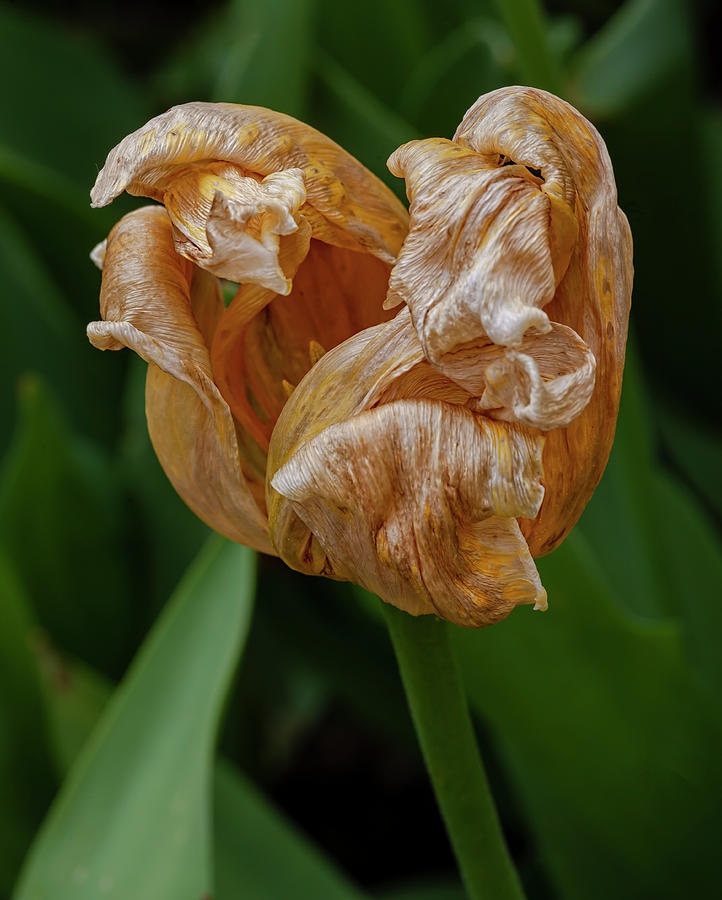
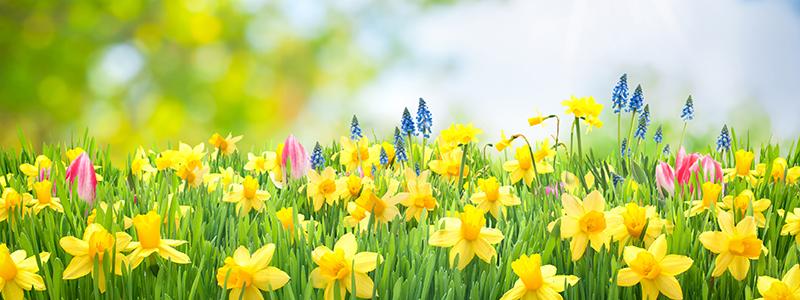
Spring is finally here on Cape Cod!! As many of us Cape Codder’s will agree, we seem to go from fall to winter, winter to late winter, then late winter to summer. Springtime here on Cape can be tough weather-wise, but if you look around, Mother Nature has started spreading some colorful life here for us to enjoy. The early spring bloomers are out; crocus, daffodils, allium, and others are starting to emerge. As our other favorites start to pop up and we may be sharpening our mower blades to get ready for the first cut, I wanted to touch on the best care for our spring bloomers.
Many of our smaller, early bloomers will multiply by seed as well as offsets, so it is best to leave the flowers attached so the seeds can ripen. Daffodils, for example, the flowers may be removed for aesthetic reasons but there is no real downside to leaving them be. Tulips, however, if you are trying to get them to flourish each year, snip off the flowers right after they fade. DON’T take away the foliage from your spring-flowering bulbs as they use the foliage to produce their energy to form new flowers. Although it may be tempting to remove the yellowing foliage, be patient, your perennials such as hosta, daylilies, or nepeta will be up in no time. Once the foliage is able to be taken away with a gentle tug, you’re golden. Gardens in general when properly arranged, are to be enjoyed through all seasons in the eyes of the beholder.
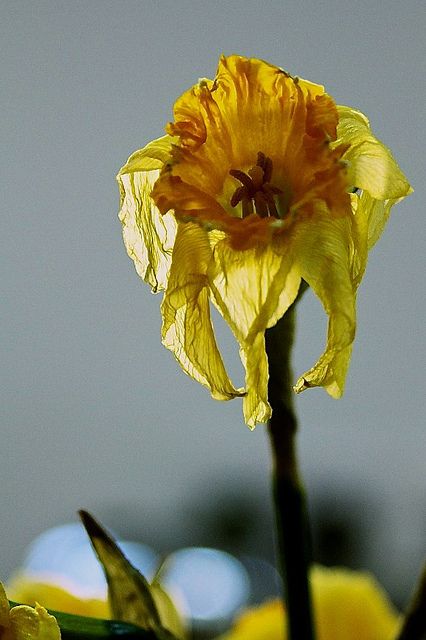
Organic or Synthetic?
Organic or Synthetic?
Fertilizers come in many shapes and forms. You have your organic methods, which can be quite smelly and displeasing to work with, or you have your “over the counter” fertilizers that have numbers on them that seem way too scientific to explain or understand. As a horticulturist with a heavy background in turf, where typically there is no threshold for keeping things green and lush on residential estates, I would previously tend to lean far more on the chemicals to give the desired effect. Does it work? Sure. Always “right”, well, that’s for a different discussion. What we’re here for today is to discuss garden soil health. As many times as our mothers have told us to “brush your teeth before bed”, we now know that organic matter in the soil is the key to a healthy garden. Adding organic matter to your garden in the form of compost is the most beneficial long-term mechanical practice that you can do. It conditions the soil as well as adds many beneficial bacteria which aid in the ability for plants to absorb the nutrients necessary for the desired effects that you are looking for. However, these “soil conditioners” take time. Simply put-organic matter in the form of compost is the best thing for your garden long term.
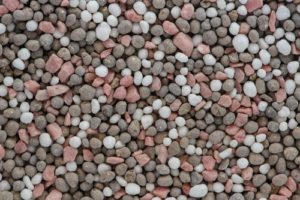

Prevent Winter Damage to Trees and Shrubs
Protect your landscape this autumn for healthy growth next spring
 n evergreen shrub
n evergreen shrubIf extreme winter weather has ever taken a toll on your landscape plants, you aren’t alone. Every spring, gardeners in regions hit by a tough winter discover the damage it can cause to trees and shrubs. Fortunately, you can take steps in autumn to prepare plants for what’s coming.
Extreme cold isn’t the only challenge faced by woody plants; in fact, plants hardy to your region should endure normal winter temperatures just fine. However, winter can wreak havoc in other ways.
Winter Challenges
- Early cold spells can damage plant tissues that haven’t had a chance to harden off for the winter.
- Dry winds and winter sun can dry out or “burn” conifer needles and broadleaf evergreen foliage, which continue to transpire (give off water vapor) during winter.
- Frozen soil means plants can’t take up water to replace the moisture lost from evaporation and transpiration.
- Midwinter thaws can “fool” plants into breaking dormancy too early, and the tender new growth may be killed by the next cold snap.
- Alternating freeze/thaw cycles can heave new plants out of the ground, leaving roots exposed to drying wind and sun.
- Bright winter sun heats up dark tree bark, which can freeze and crack when temperatures drop quickly at sunset.
- Deer, mice, rabbits and other animals gnaw bark and browse leaves and twigs when other food becomes scarce during long, cold winters.
Although wet, heavy snow can damage branches, snow cover is usually good for plants. A layer of snow provides moisture and helps insulate the soil and roots from fluctuating temperatures.
Preparing for the Big Chill
Healthy plants are more likely to get through winter unscathed. A plant that has struggled during the growing season, whether due to insufficient sunlight, water or nutrients, or heavy damage from insects or disease, will enter winter in a vulnerable state. Start your winter-protection strategy with careful care during the growing season and into autumn.
- Don’t prune after midsummer. Pruning stimulates tender, new growth and delays dormancy.
- Stop fertilizing plants six weeks before the first fall frost, to help plants harden off properly.
- Water plants thoroughly throughout fall until the ground freezes; make sure the water penetrates 12″ to 18″ deep to reach the root zone.
Here are tips for specific types of plants:
Deciduous Trees and Shrubs
Deciduous shrubs and trees — those that lose their leaves in autumn — have adapted to life in cold-winter climates by going dormant. Many of these techniques are designed to ensure that plants enter dormancy before the coldest weather arrives, and remain dormant until spring.
Mature trees and shrubs that are hardy in your region need no extra protection. However, young and newly planted trees and shrubs benefit from some extra TLC:
- Because plant roots may not have ventured very far into the native soil, it’s especially important to water newly planted trees and shrubs thoroughly into fall, until the ground freezes.
- Once the ground is frozen, apply a 3″ to 4″ layer of insulating mulch, such as bark mulch or pine straw, around the base of the plant. This helps insulate the soil so it stays frozen and helps prevent heaving. Keep the mulch several inches away from the trunk to prevent rot and discourage rodent chewing.
- Tender young bark is easily damaged by gnawing mice and rabbits. Protect the trunks of young trees — especially fruit trees — with tree guards made of plastic or wire.
- The bark of young trees is also susceptible to sunscald. Paint the south side of the trunk with a solution of diluted white interior latex paint or wrap the trunk with paper tree wrap. This also helps prevent frost cracks, which occur when dark-colored bark heats up on a sunny winter day and then rapidly cools at night.
You can find tree wrap and guards at garden centers and hardware stores.
Conifers and Broadleaf Evergreens
Trees and shrubs that remain green — conifers and broadleaf evergreens, such as rhododendrons — slow their growth but never go fully dormant. It’s especially important that they have a ready supply of water whenever the ground isn’t frozen.
- Drying winter winds are especially damaging to evergreens. In exposed, windy areas, erecting a windbreak helps prevent damage, as can wrapping shrubs with burlap or easy-to-use shrub wraps.
- If branches are bending under the weight of a heavy snowfall, gently remove some of the snow. However, don’t try to remove ice after an ice storm; you’re likely to cause more harm than good.
- Some evergreens, notably white pines, are susceptible to damage by road salt sprayed onto branches by passing snowplows. In spring, you’ll see brown needles on the road-facing side of the tree. Protect hedges and shrubs with burlap or shrub wraps. On taller trees, there is little you can do; consider replanting with more salt-tolerant species.
- Keep deer from browsing on hedges and shrubs by wrapping them with burlap or shrub wraps.
Gardener’s Corner Week 4
True Or False? THE POPPY IS
A SYMBOL OF MEMORIAL DAY?

TRUE: In the battlefields of Europe, the red field poppy was one of the first plants to reappear. The seeds from the common red poppy were scattered in the wind lying dormant until germinating when the ground was disturbed amongst the fighting of World War 1.
The wearing of the poppy flower was customarily done on Memorial Day in the US. Now, the symbolism has evolved to include all veterans living and deceased, so poppies are also worn on Veteran’s Day.
Today, poppies symbolize more than the loss of life. They are a symbol of recovery and new life, particularly in support of the servicemen who survived the war but suffered from physical and psychological injury.
Growing Poppy Flower seeds can be a very enjoyable and rewarding hobby. The seeds can be easily germinated at home. While the ideal time to plant them is early fall and Spring, seeds can still be put in your gardens during late May to Early June.
What a wonderful and colorful tribute to all the brave men and women on this Memorial Day weekend!
For help with your poppy planting or any other gardening needs, please call our talented and knowledgeable gardeners at 508-548-0911.
Gardener’s Corner Week 3
Raised Garden Beds are for Aesthetics only?
True or False?

FALSE! The are many benefits to raised garden beds and they are ideal for growing small plots of flowers, vegetables, and herbs. Raised garden beds tend to provide good drainage compared to ground level gardens and provide a more comfortable and custom working level. They also allow you a head start in the spring by warming the soil earlier and keep pathway weeds out of your beds. Gardeners are re-discovering the very old technique of raised beds.
Want to add beauty to your gardens? Call or email us today to set up an appointment with Josh, our Maintenance Manager. Josh has several styles that he is offering this season. One of his favorites ( not pictured) is based on a century-old design made from a premium New England Cedar and built to last for many years with its mortise-and-tenon design. Call us today 508-548-0911.
Gardener’s Corner Week 1
True or False: Pansies can sing??
Answer: False! However, movie fans may remember Disney’s animated adaption of Alice in Wonderland featured a chorus of singing pansies.
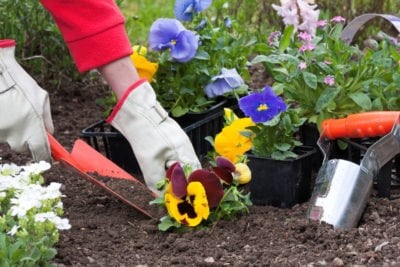
Spring is a great time of the year to put in annual flowering plants, and one of the favorites for those of us in New England are pansies. For bursting early spring color in your yard and garden the time to plant them is now upon us. They do exceptionally well in garden beds, planters, and boxes. Mixed with other cool weather flowers, you will be the envy of your neighbors!
Call our expert gardener Kathy for help from our gardening team with any of your Early Spring Gardening needs. 508-517-0546
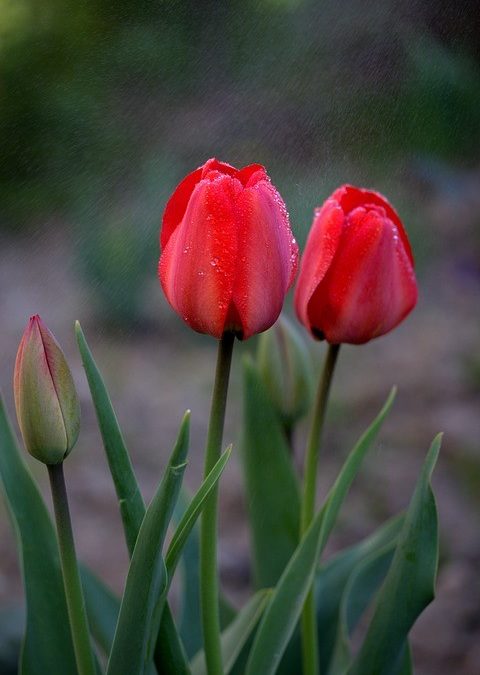
Gardener’s Corner Week 2
April Showers Alone Bring May Flowers – True or False?
False: April is typically a wet month on Cape Cod. Plants usually do not have to worry about having enough water in the spring to start growing and producing flowers. However, the temperature is equally if not the most important ingredient in dictating flowering times.
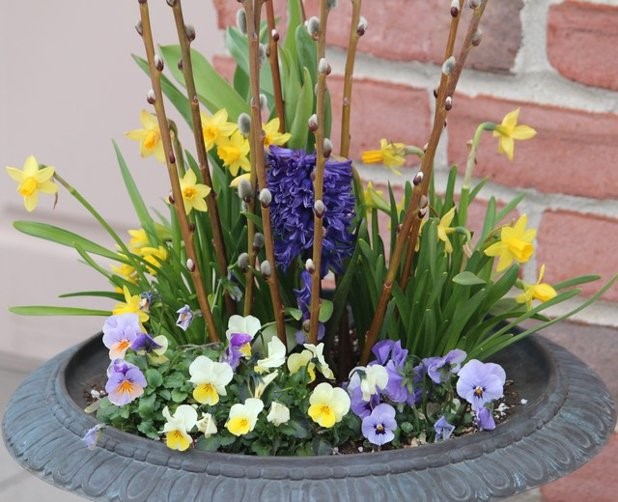
So now that April is here and Spring has finally sprung it is a great time to get your yard in tip-top shape for summer. One of the first things on your list, if you have not already done so, should be to take your spring cleaning outdoors! It is time to get rid of the leaves, branches, and winter debris. Your spring clean-up should also include weeding, and finishing up pruning and preparing your shrubs and trees. Early Spring is also an ideal time to plant trees and shrubs.
Planting now gives trees and shrubs ample time to get established.
We are still accepting new clients for Spring Cleanups and lawn maintenance service for our 2019 season. Give us a call and let us help you create the back yard you have always dreamed of. 508-548-0911

